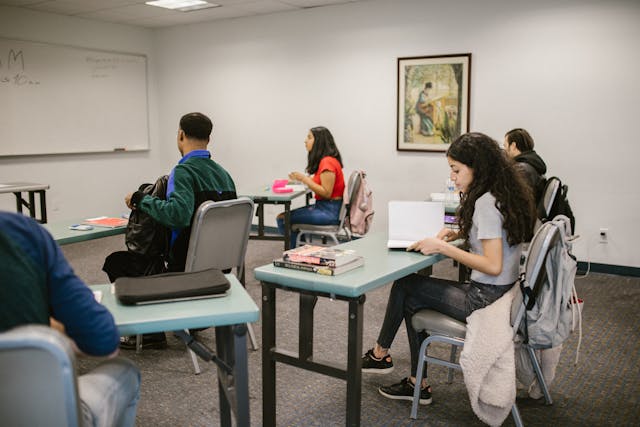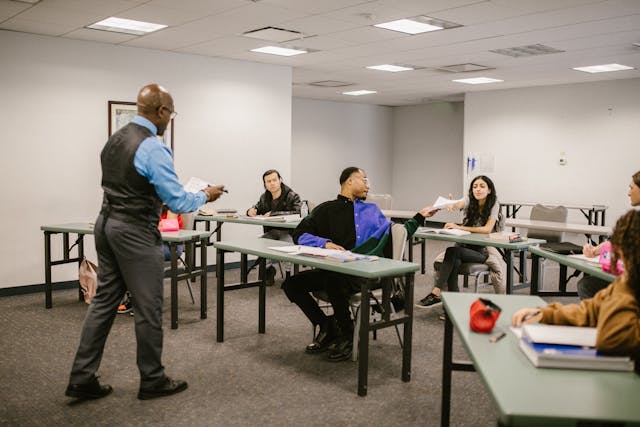Best practices for implementing MTSS in schools

Today, most schools across the country use some form of Multi-Tiered System of Supports (MTSS), but inconsistent implementation can limit the efficacy of these programs. Research shows that MTSS is effective. However, it can be challenging to ensure you’re getting the benefits you want. MTSS involves several components, including teamwork, data interpretation, intervention delivery, and family involvement.
Establish a strong leadership team
Building a strong leadership team is the first step and should include administrators, teachers, counselors, and support staff. Anyone who works directly with students in your school should take ownership and learn MTSS best practices. Roles need to be clearly defined, and common goals must be adhered to so that every student’s needs are met.
Having a diverse team helps bridge the gap between academic, behavioral, and mental health support. Your leadership team can coordinate interventions, monitor progress, and create a sustainable MTSS foundation, even if you experience staff or leadership changes.
Effective leadership relies on clear communication channels. School communities should be informed and engaged throughout the instruction, implementation, and execution process. A commitment to teamwork creates buy-in and ensures that responsibilities are shared, ultimately strengthening your MTSS framework while limiting burnout.
Make decisions based on student data
Data is at the core of any successful MTSS system. Utilizing multiple data sources helps identify strengths and MTSS challenges, so you can establish the most effective interventions to support students.
You can and should assess factors like:
- Academic assessments
- Behavioral records
- Attendance rates
- Social-emotional screenings
- Diagnostic assessments that identify gaps in knowledge and skills
- Office discipline referrals
- Teacher and counselor observations
- Monitoring tools that have been embedded in interventions
Hold regular team meetings with educators and other leaders to review information on student learning and well-being, so you can make informed, data-driven decisions. If you regularly review and assess data, you’re more likely to catch mental health red flags. Research indicates that early intervention is the most significant predictor of positive mental health outcomes. Student data allows you to respond in more precise ways, rather than guessing or acting too late to make a difference.
“Establishing a process for progress monitoring with a multidisciplinary team to discuss what members are seeing about the student is helpful to make sure that others working with the student are interpreting the same patterns.”
- Laura Magnuson, MA, MS, LAMFT, VP of Clinical Engagement
Provide tiered interventions with fidelity
The three-tiered MTSS approach is designed to ensure all students receive appropriate support. Monitoring progress helps you determine if a student might benefit from advancing to a higher tier. The tiered support system enables you to utilize a framework that evolves in response to student needs.
- Tier 1: Universal instruction and school-wide initiatives create a strong base for the majority of students. Classroom management and quality experiences drive this tier, which supports approximately 75-90% of students.
- Tier 2: At this level, small group, data-driven interventions focus on specialized academic and behavioral skills. Students who qualify for tier 2 support struggle more than those at tier 1, and this type of structured response delivers consistent interventions at an appropriate level of intensity to meet their needs. Approximately 10-25% of students benefit from tier 2 interventions.
- Tier 3: If earlier interventions aren’t providing sufficient support, Tier 3 interventions offer a more intensive, individualized response. This might include one-on-one instruction or the use of specialists and other external resources. Typically, less than 10% of students fall into this category.
Foster collaboration among teachers and staff for better outcomes
When teachers, staff, and other school personnel openly communicate and work together, MTSS efforts will run more smoothly. Collaboration helps teams analyze student data and share valuable insights. It’s an effective way to monitor progress and develop intervention plans.
Creating professional learning communities and cross-curricular teams fosters relationships and provides professional support that promotes personal growth. Teamwork means that everyone shares the workload and different perspectives are acknowledged and valued.
Technology makes assessing student data and planning interventions easier than ever. It improves communication among core teachers, interventionists, counselors, and other staff members, so everyone is on the same page and understands individual students.
Engage families and students
Family engagement is another critical part of MTSS best practices. Numerous studies have demonstrated that caregiver involvement can improve attendance rates, academic performance, and social skills. Families offer valuable insights and a perspective that teachers in the classroom often don’t have. Caregivers offer a realistic view of a student’s needs and emotional well-being, providing ongoing support outside the school setting.
“Educators should look for indicators like a sudden drop in grades, issues with completing assignments, and withdrawing from activities to discuss with those at home if further support may be needed.”
- Laura Magnuson, MA, MS, LAMFT, VP of Clinical Engagement
At the Tier 1 level, family engagement may simply involve regular communication about activities in classroom activities. In tiers 2 and 3, though, involvement often becomes more intense. Families might have input on intervention plans and can help with progress monitoring.
It’s crucial to be culturally responsive when it comes to communication. Every family deserves to feel heard, respected, understood, and empowered, regardless of language or background differences. By tailoring outreach and support services to meet the diverse needs of families, you can develop strong partnerships that ultimately benefit both academic and emotional growth.
Monitor progress and adjust interventions regularly
Relying on ineffective interventions is frustrating for both you and your students. Thus, monitoring progress is essential to your MTSS efforts. You want instant feedback on what’s working, what needs to be changed, and how to achieve the best outcomes. While every student’s needs are unique, you can use the following guidelines as a starting place.
- Tier 1 support: Tier 1 monitoring is less frequent and intensive. Universal screenings for all students should occur multiple times each academic year. Strive for three checkpoints annually, where you can track overall academic and behavioral needs and trends. Monitoring at this level ensures you can quickly identify any at-risk students with needs who might benefit from advancing to the next tier.
- Tier 2 support: Progress monitoring should occur at least every two weeks.
- Tier 3 support: Students often need weekly check-ins and quick, reliable assessments that focus on specific skills to accurately measure growth and needs.
Investing in your school’s MTSS success
Implementing MTSS without a clear plan all but guarantees low buy-in and poor outcomes. With dedication and the right resources, though, your MTSS investment can offer profound benefits.
By using MTSS best practices, your school can:
- Improve academic achievement
- Reduce behavioral concerns
- Address social-emotional issues
- Ensure students get appropriate support
Mental health support is a crucial part of any educator’s MTSS plan. It should never be seen as an add-on or something extra to regular educational instruction. Talkspace can offer tier 2 and tier 3 interventions through therapy for students.
Mental health services should be a fundamental part of a broader MTSS framework that supports both students and staff. Investing in MTSS means you’re committed to long-term, sustainable success for students and staff. When your MTSS system functions smoothly and effectively, you can support students at all levels—academically and emotionally—in a way that helps them feel safe.
Discover how Talkspace can be your partner in implementing an MTSS framework that prioritizes student emotional well-being. If you’re ready to transform your school’s MTSS approach, request a demo today.
Sources:
- Colizzi, Marco, Antonio Lasalvia, and Mirella Ruggeri. 2020. “Prevention and Early Intervention in Youth Mental Health: Is It Time for a Multidisciplinary and Trans-diagnostic Model for Care?” International Journal of Mental Health Systems 14 (1): 23. https://doi.org/10.1186/s13033-020-00356-9. Accessed November 4, 2025.
- Nitz, Jannik, Fabienne Brack, Sophia Hertel, Johanna Krull, Helen Stephan, Thomas Hennemann, and Charlotte Hanisch. 2023. “Multi-tiered Systems of Support With Focus on Behavioral Modification in Elementary Schools: A Systematic Review.” Heliyon 9 (6): e17506. Understanding and applying MTSS best practices makes the implementation process manageable and more effective. Keep reading to learn how school leaders, educators, and support staff can efficiently implement MTSS. With the right tools and strategies, you can build an inclusive, data-driven environment that supports the academic, behavioral, and social-emotional needs of all students.. Accessed November 4, 2025.
- The Annie E. Casey Foundation. 2025. “The Role of Parental Involvement in Your Child’s Education.” August 10, 2025. https://www.aecf.org/blog/parental-involvement-is-key-to-student-success-research-shows. Accessed November 4, 2025.






